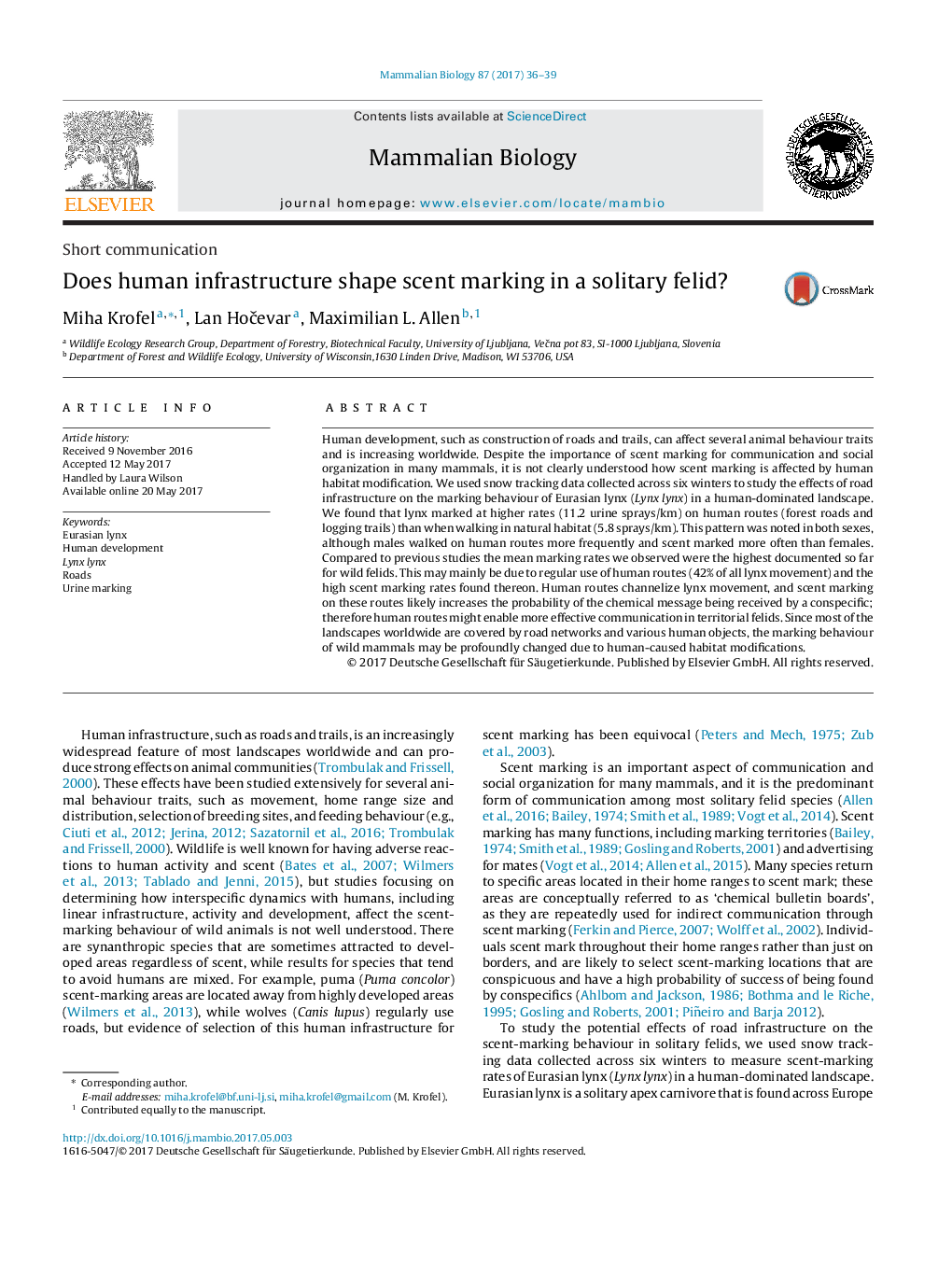| Article ID | Journal | Published Year | Pages | File Type |
|---|---|---|---|---|
| 5533705 | Mammalian Biology - Zeitschrift für Säugetierkunde | 2017 | 4 Pages |
Human development, such as construction of roads and trails, can affect several animal behaviour traits and is increasing worldwide. Despite the importance of scent marking for communication and social organization in many mammals, it is not clearly understood how scent marking is affected by human habitat modification. We used snow tracking data collected across six winters to study the effects of road infrastructure on the marking behaviour of Eurasian lynx (Lynx lynx) in a human-dominated landscape. We found that lynx marked at higher rates (11.2 urine sprays/km) on human routes (forest roads and logging trails) than when walking in natural habitat (5.8 sprays/km). This pattern was noted in both sexes, although males walked on human routes more frequently and scent marked more often than females. Compared to previous studies the mean marking rates we observed were the highest documented so far for wild felids. This may mainly be due to regular use of human routes (42% of all lynx movement) and the high scent marking rates found thereon. Human routes channelize lynx movement, and scent marking on these routes likely increases the probability of the chemical message being received by a conspecific; therefore human routes might enable more effective communication in territorial felids. Since most of the landscapes worldwide are covered by road networks and various human objects, the marking behaviour of wild mammals may be profoundly changed due to human-caused habitat modifications.
